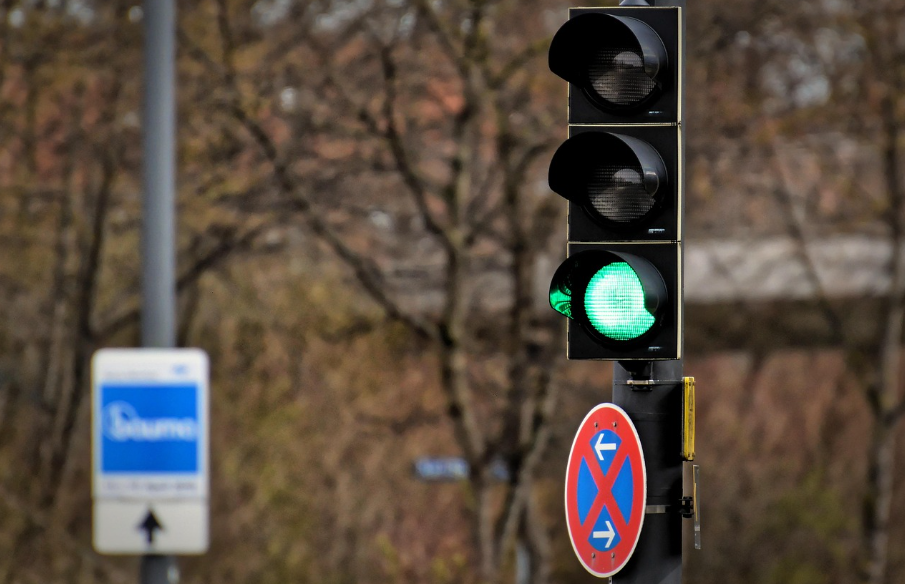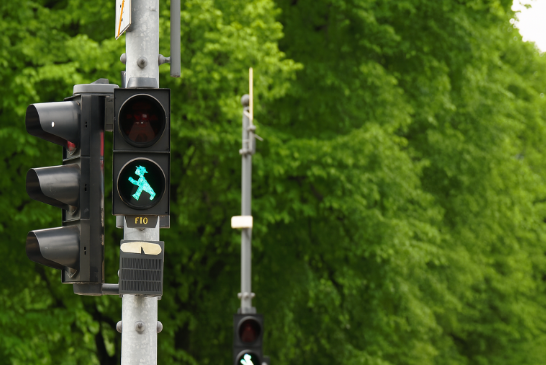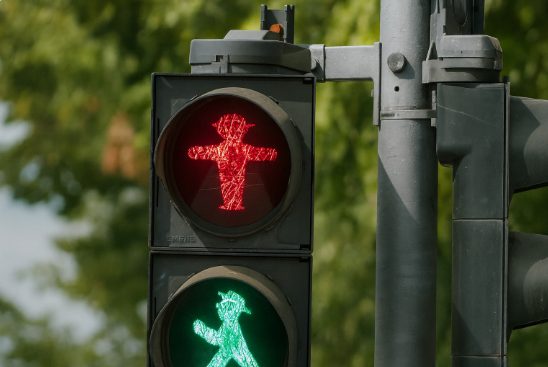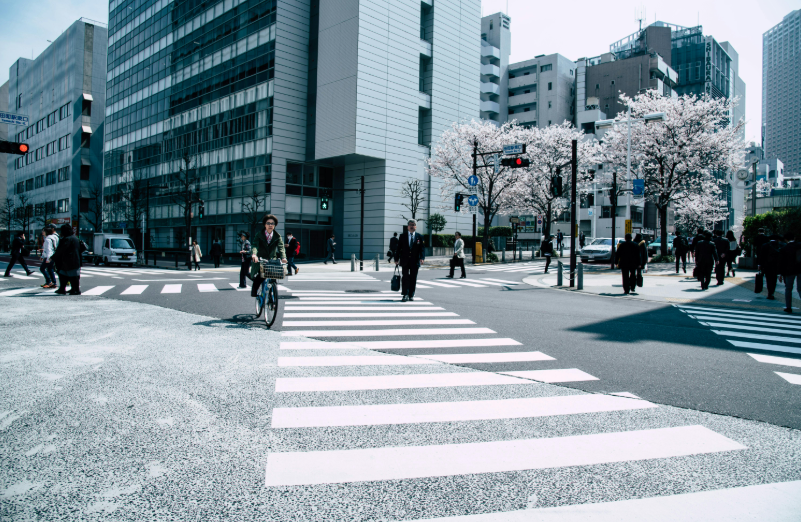Which colour follows the green signal at a puffin crossing? Understanding the colour sequence at a puffin crossing is essential for both drivers and pedestrians in the UK. These modern pedestrian crossings use advanced sensor technology to manage traffic more effectively. The transition from green is particularly crucial for safety and road discipline.
What is the Meaning of a Puffin Crossing?

What does “puffin crossing” stand for?
“Puffin” stands for Pedestrian User-Friendly Intelligent crossing. It refers to a type of pedestrian crossing developed in the UK that improves upon earlier designs such as the pelican crossing. The objective is to use intelligent, adaptable technology to improve traffic efficiency and safety.
Unlike traditional crossings, the name isn’t inspired by the bird. Instead, it’s a backronym that highlights the crossing’s key features — especially its focus on being user-friendly and intelligent.
The term was coined to distinguish the system from outdated models and to represent the technological evolution of pedestrian safety infrastructure.
What is the purpose of a puffin crossing?
The puffin crossing was introduced to:
- Enhance pedestrian safety by keeping signals close to the pedestrian, making them more visible and intuitive.
- Improve traffic flow by using sensors that cancel the red phase if a pedestrian walks away.
- Provide longer crossing times when necessary, especially for older adults or people with disabilities.
- Reduce false pedestrian calls thanks to its smart sensor system.
- Minimise vehicle idling time, reducing emissions and saving fuel.
This technology helps balance the needs of both pedestrians and motorists, avoiding unnecessary delays for either party and enhancing road safety.
Puffin crossings are now widely used in urban areas, particularly where pedestrian traffic is heavy and safety is a top concern.
How does the name relate to its features?
The “intelligent” label refers to its key innovations:
- Kerbside sensors that detect if a pedestrian is waiting to cross and cancel the signal if they walk away.
- On-crossing detectors that monitor if someone is still crossing the road and extend the red light as needed.
- Dynamic timing that adjusts the duration of signals to real-time pedestrian movement, instead of relying on pre-set times.
These smart sensors help reduce accidents, eliminate guesswork, and ensure safer road-sharing between pedestrians and vehicles.
Furthermore, the near side has pedestrian signal lights, which:
- Encourages pedestrians to face and observe oncoming traffic.
- Makes it easier to see the signal without stepping into the road.
- Prevents the common problem of people watching the far-side signal and stepping out prematurely.
All of these factors contribute to the “user-friendly” and “intelligent” nature of puffin crossings, making them a preferred choice for modern UK traffic systems.
What is a Puffin Crossing and How Does it Work?

What makes puffin crossings different from pelican crossings?
Puffin crossings have multiple unique characteristics:
- Pedestrian movement and presence are detected using sensor-based technologies.
- Pedestrian signals are near-side, making them easier to see while waiting.
- No flashing amber or flashing green man — this reduces confusion.
- Timings are dynamic, not fixed, adapting to each pedestrian.
Pelican crossings, in contrast, rely on fixed timings and a flashing amber phase for vehicles, which can sometimes lead to misinterpretation.
Also, in pelican crossings, pedestrians often see a flashing green man, which some misinterpret as permission to begin crossing. Puffin crossings avoid this issue altogether by eliminating flashing phases.
How do the sensors improve traffic flow and safety?
Puffin crossings are equipped with:
- Kerbside sensors: These detect if a pedestrian is waiting. If someone presses the button and then walks away, the system recognises this and cancels the call, preventing unnecessary delays.
- On-crossing sensors: These are used to identify movement on the actual crossing. If someone is still walking across the road, the system extends the red light for vehicles until the pedestrian has safely cleared the crossing.
These features ensure that:
- Pedestrians are not rushed while crossing — making it safer for elderly or disabled users.
- Traffic lights only change when necessary, improving vehicle flow and reducing congestion.
- Blind or distracted crossings are avoided, enhancing safety for inattentive users.
- Real-time signal timing adjustments cut down on waiting times for both pedestrians and drivers.
The objective of a responsive, adaptable transport infrastructure for contemporary cities is embodied by puffin crossings, which make the roadways smarter and safer by adjusting the signal phases to the current conditions.
Which Colour Follows the Green Signal at a Puffin Crossing?

What is the traffic light sequence at a puffin crossing?
The typical sequence for vehicles at a puffin crossing is:
- Green – Vehicles can go.
- Steady amber – Prepare to stop.
- Red – Stop.
- Red and amber – Prepare to go.
- Green – Vehicles may go again.
For pedestrians, the near-side signal shows:
- Red man – Wait.
- Green man – Safe to cross.
- Blank signal – Do not begin crossing if the green man has disappeared.
Why is steady amber important after green?
The steady amber follows green and warns drivers that the lights will soon turn red. This gives them enough time to slow down and stop safely. It’s a safety buffer that:
- Prevents sudden braking.
- Reduces rear-end collisions.
- Allows drivers to judge whether it is safe to stop before the stop line.
Unlike pelican crossings, there’s no flashing amber; drivers must wait until the red and amber phase is complete before proceeding.
What should drivers do during the amber signal?
When the amber light appears:
- Stop if it’s safe to do so.
- Continue only if braking would be dangerous or you’re already too close to stop safely.
This phase ensures both pedestrian safety and smooth vehicle operation without confusion.
What Do the Pedestrian Signals Indicate at a Puffin Crossing?
How do pedestrians know when to cross?
Pedestrians should:
- Wait for the solid green man to appear on the near-side display.
- Only start crossing when this signal is clearly visible.
The system ensures that the green man only activates when it is safe, meaning:
- All vehicles have stopped.
- The crossing path is clear.
What happens after the green man disappears?
Once the green man turns off:
- Pedestrians should not start crossing.
- Those already crossing are detected by sensors and the light will remain red for vehicles.
This discourages late or rushed crossing and allows adequate clearance time for slower individuals.
How Does the Puffin Crossing Signal System Compare to Other UK Crossings?
| Type of Crossing | Amber Phase | Pedestrian Indicator | Sensor Use |
|---|---|---|---|
| Puffin | Steady amber only | Near side, no flashing | Yes |
| Pelican | Flashing amber | Opposite side, flashing | No |
| Zebra | No traffic lights | None | No |
| Toucan | Steady amber | Near side (shared path) | Yes |
Why Is Understanding the Light Pattern Important for Road Safety?

How does it affect driver behaviour?
Drivers who understand puffin signals:
- Make more informed and safer decisions.
- Are better prepared to stop or go without hesitation.
- Avoid misinterpreting the signal change, especially during steady amber.
This improves flow and reduces minor but dangerous traffic mistakes.
How does it protect pedestrians?
For pedestrians:
- Knowing signal meanings prevents premature crossing.
- Understanding near-side signal changes encourages safe timing.
- Sensors ensure protection for all types of pedestrians — especially those needing more time.
“Smart pedestrian crossings like puffins significantly improve road safety by integrating real-time pedestrian detection technology.” – Dr. Linda Manning, Traffic Safety Specialist
How Often Should Drivers and Pedestrians Review Traffic Signal Rules?

Why is regular review of road rules necessary?
- Traffic systems evolve with technology.
- Updated awareness prevents accidents.
- It ensures compliance during driving tests or refresher training.
What resources are best for learning signal patterns?
- The Highway Code (UK Government official manual).
- Driving theory test preparation sites.
- Approved driver education platforms.
What happens if a pedestrian presses the button but walks away?
Sensors detect the absence of the pedestrian and cancel the request, allowing traffic to flow normally.
How does a puffin crossing assist visually impaired users?
- Audible beeps indicate when it’s safe to cross.
- Tactile rotating cones underneath the signal box vibrate to guide blind pedestrians.
- Near-side signals reduce disorientation.
Are puffin crossings safer than pelican crossings?
Yes. Puffins:
- Eliminate ambiguous flashing phases.
- Detect real pedestrian behaviour.
- Adjust timings in real time for maximum efficiency.
These upgrades make puffin crossings the UK’s preferred option in new installations and urban upgrades.
Conclusion: What Colour Comes After Green at a Puffin Crossing?
The colour that follows the green signal at a puffin crossing is steady amber. This phase alerts drivers to prepare to stop safely. It replaces the flashing amber used in older pelican crossings and supports smoother, safer interaction between drivers and pedestrians.
With near-side signals, smart sensors, and dynamic timing, puffin crossings embody the UK’s push toward safer and more efficient roads.
FAQs
What does steady amber mean at a puffin crossing?
It signals drivers to prepare to stop, as red will follow. Stop unless it’s unsafe.
Is there a flashing amber at a puffin crossing?
No. Puffin crossings only feature steady amber, then red. Flashing amber is used in pelican crossings.
Can pedestrians cross when the green man is flashing?
No. Puffin crossings do not have a flashing green man. Pedestrians must wait for the solid green man before crossing.
Why is the signal on the near side at puffin crossings?
Near-side signals keep pedestrians’ attention on traffic and reduce premature crossings. It’s a key safety enhancement.
What are the benefits of sensor-equipped crossings?
- Cancel requests when no one is waiting.
- Extend red lights if pedestrians are still crossing.
- Adjust timing dynamically based on usage.

I’m Joe Chris, co-author at ukbusinessmag.co.uk and a long-time enthusiast of all things business and finance. My background is in digital marketing and e-commerce, and I love diving into trends that impact the UK business landscape. Through my writing, I aim to make useful, real-world advice accessible to business owners.



